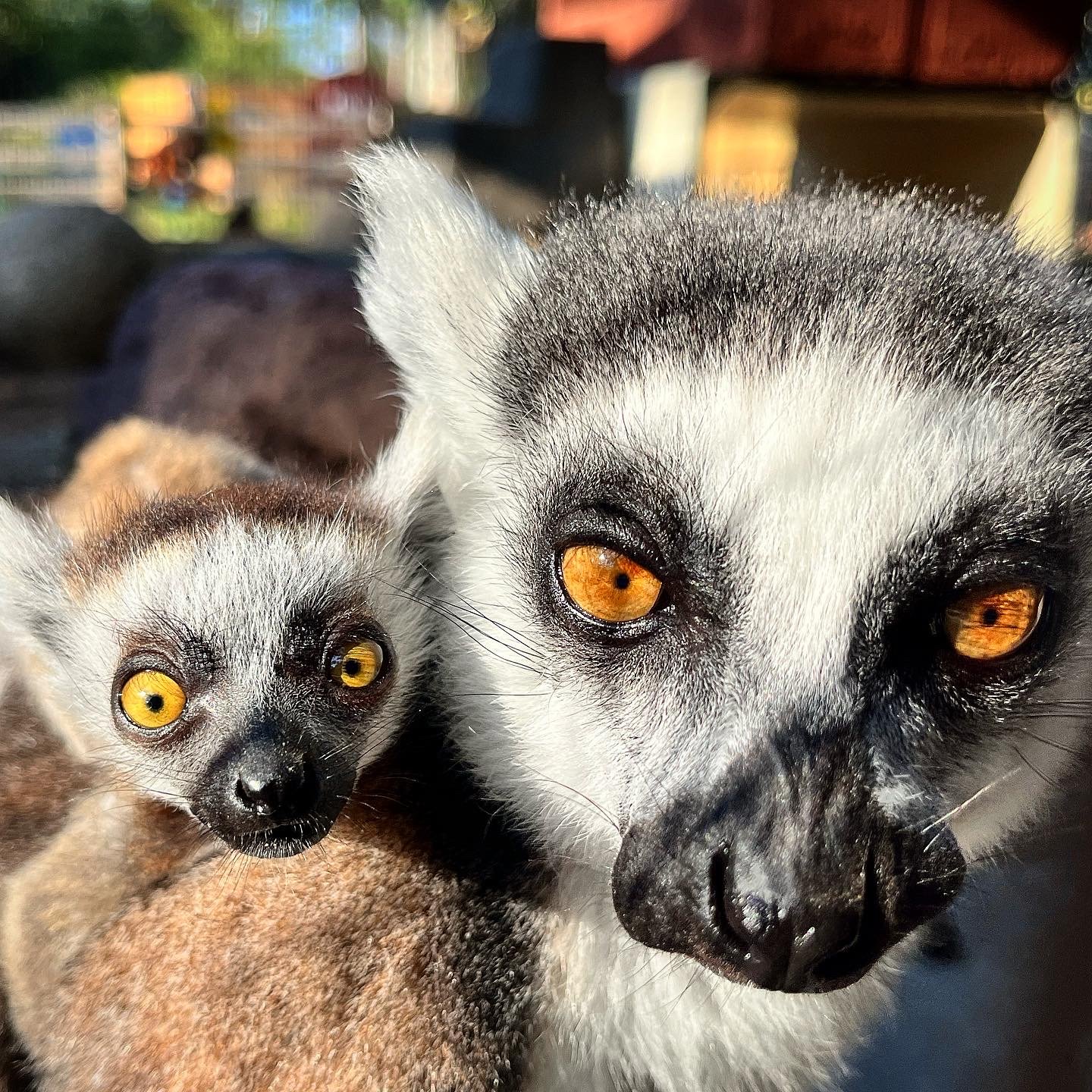
Meet our Ring-tailed Lemurs
Ring-tailed Lemur
(Lemur catta)
Native Habitat: Ring-tailed lemurs are native to south and southwestern Madagascar where they prefer dense euphorbia and riparian forests as well as brush.
Average Head-Body Length: 15- 18 inches
Average Tail Length: 22- 25 inches
Average Weight: 4.9- 6lbs.
Wild Diet: Herbivores. With a pallet for over 30 plants, they most commonly consume fruit, leaves, and flowers. Seeds, bark, and sap may also be consumed.
Fun Fact: Ring-tailed lemurs live in female-dominated groups called troops where females stay in the troop of their birth while mature males migrate to other troops. Troop size can range anywhere between 3 to 27 individuals!
Wilderness Walk’s troop currently consists of 5 ring-tailed lemurs: Lucy, Lexi, Lacey, Levi, and Luca. Born in 2009, Lucy came to live at Wilderness Walk in December 2012 and is the zoo’s oldest lemur. Lexi and Lacey are twin sisters that were born here at the zoo on June 14, 2018. You can come take part in their birthday party every year! Levi was also born here on April 24, 2019. Our youngest lemur, Luca, was born to Lucy on July 6, 2023. Their captive diet includes a special biscuit made by Mazuri along with a variety of fruits, vegetables, and greens. Some of their favorites include sweet potato and banana. These social animals have become some of our visitor’s favorite animals. From their sunbathing “yoga pose” to their array of vocalizations, visitors always enjoy learning about these beautiful animals.
True to their name, ring-tailed lemurs have alternating black and white bands on their tails. Their tails are longer than their bodies and serve a rudder-like purpose in that they provide balance while leaping through the trees. These lemurs also have large pads on their fingers and toes to provide additional traction while jumping onto branches or tree trunks. While their eyesight is relatively poor, they have an excellent sense of smell making scent marking an extremely important means of communication. Scent marking enables them to establish their territory, as well as aids them in determining male hierarchy and breeding behavior. In fact, males compete with one another through “stink fights” during courtship which involves the scent glands located on the wrists and shoulders. Concurrent tail-marking, tail-waving and palmar marking will be seen, and can last anywhere from 10 minutes to 1 hour!








